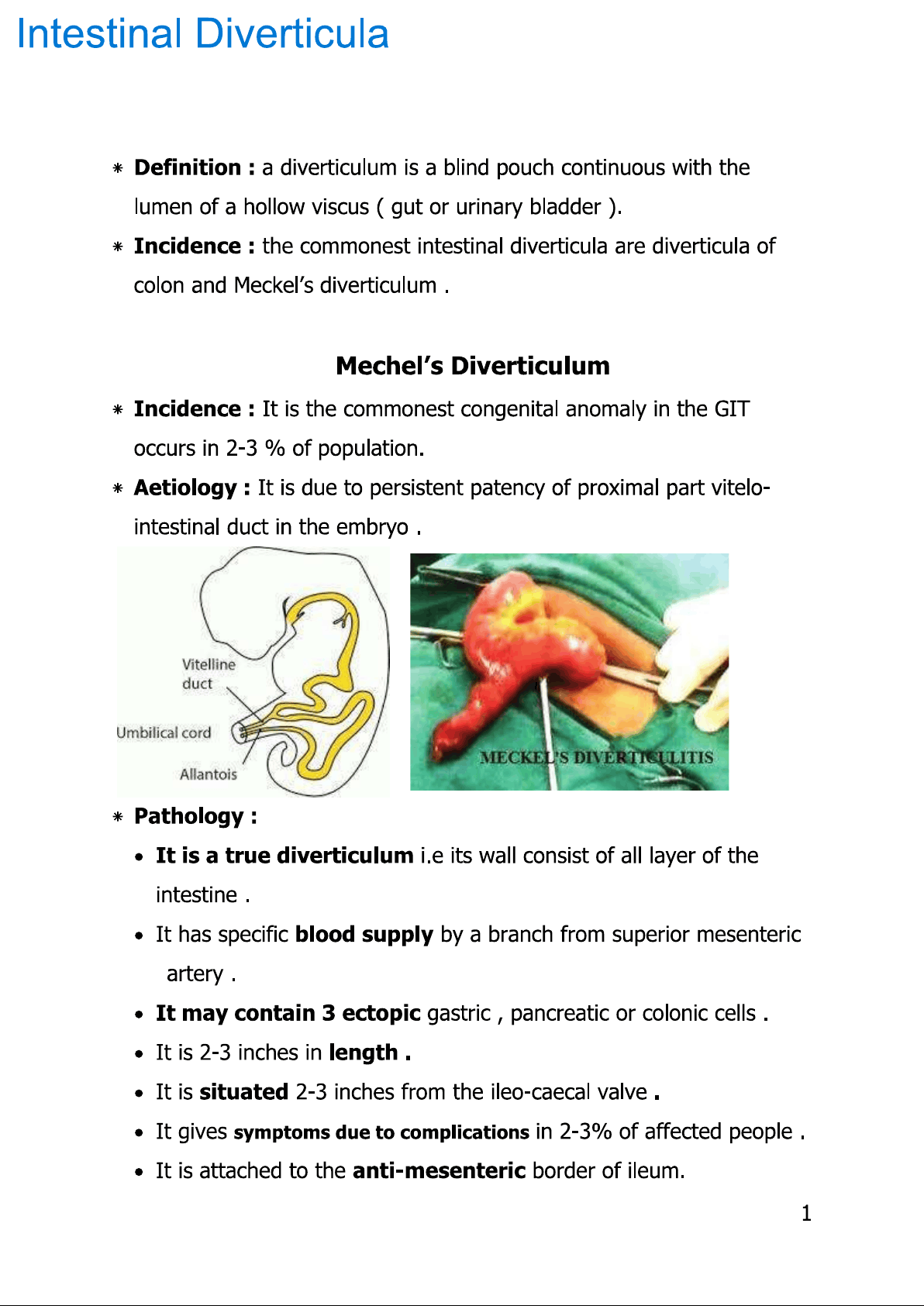
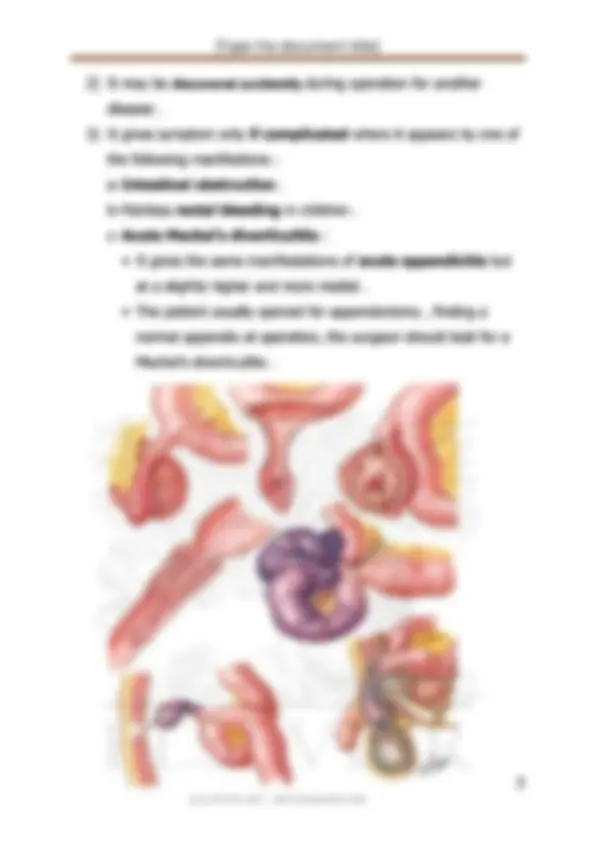
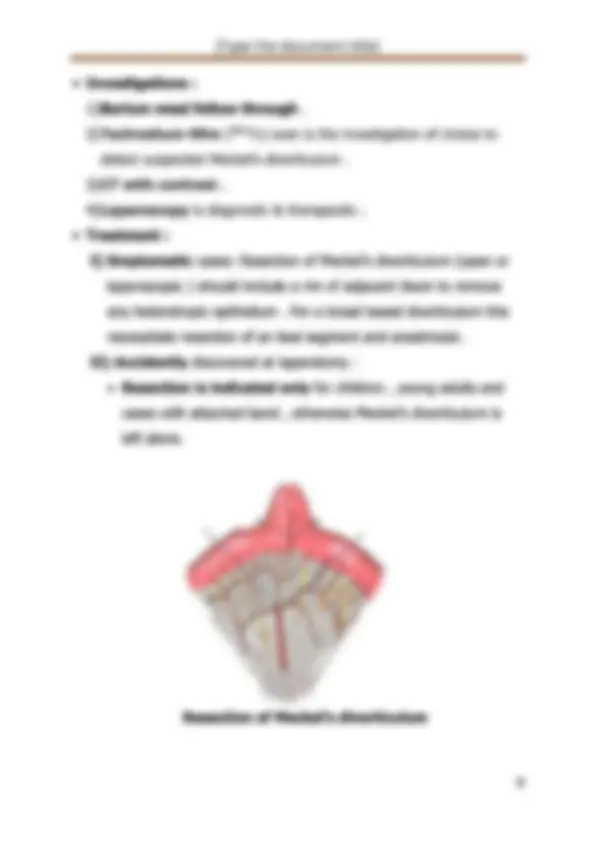
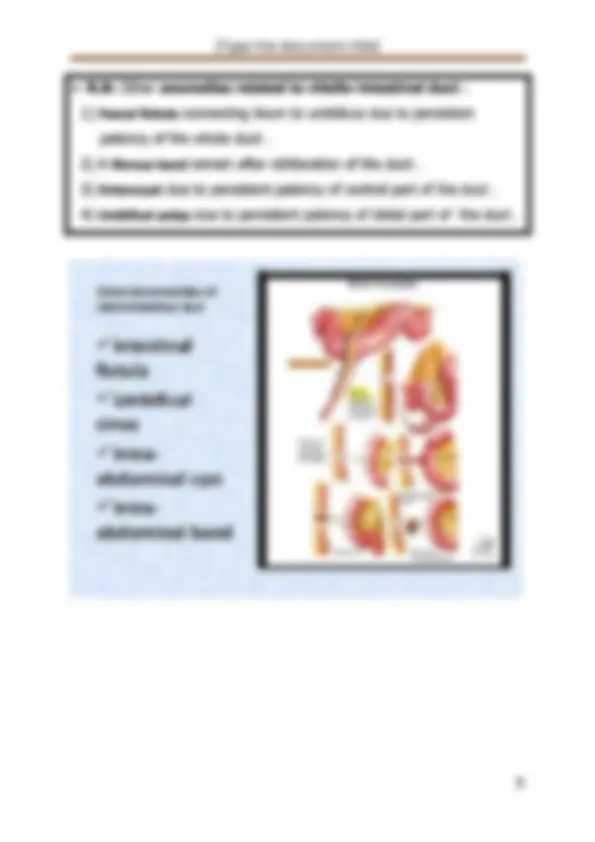
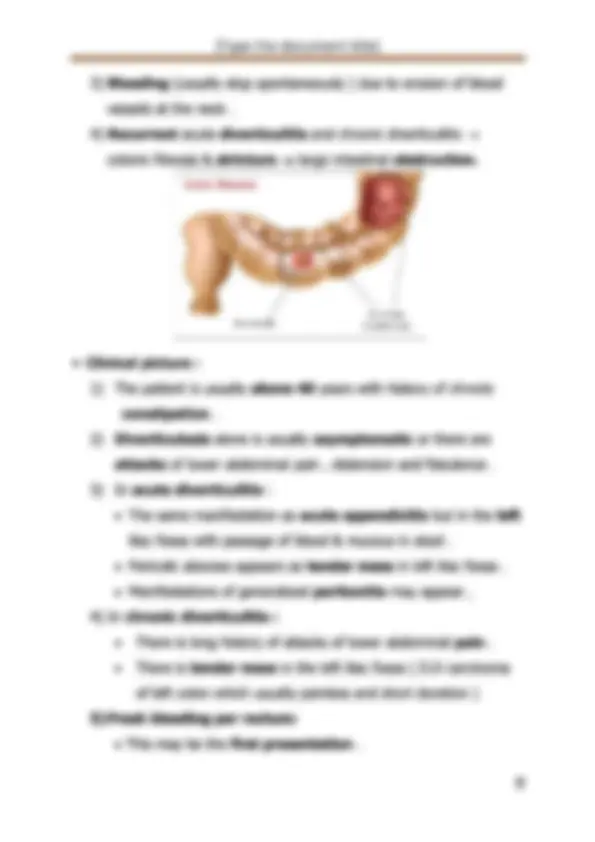
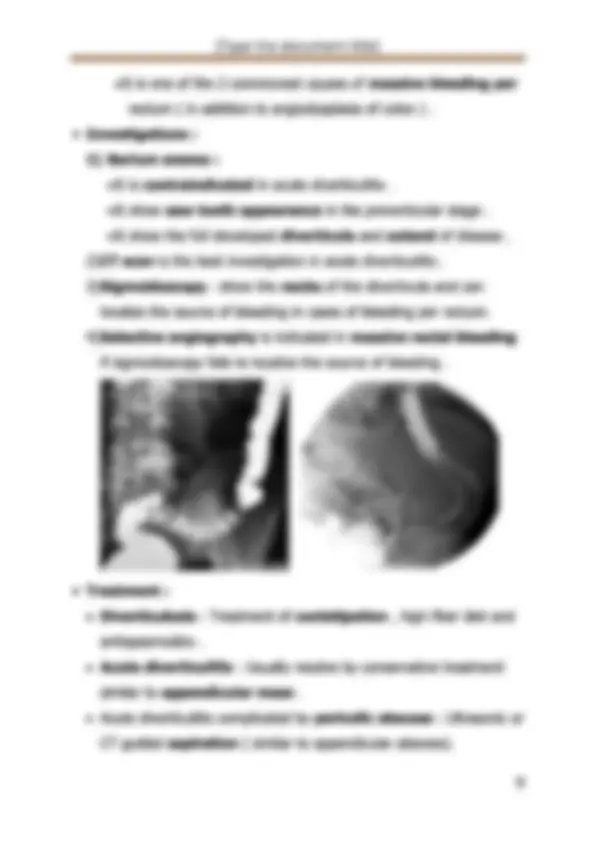
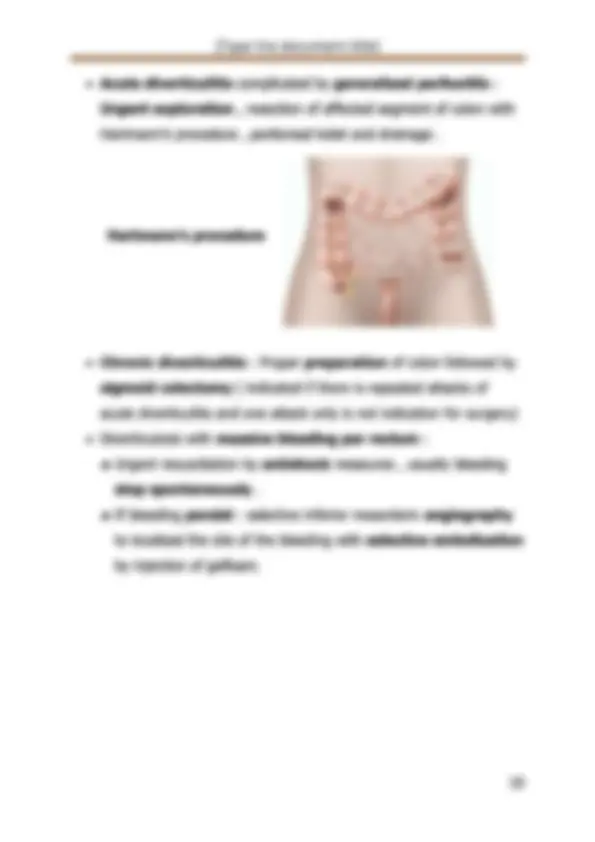


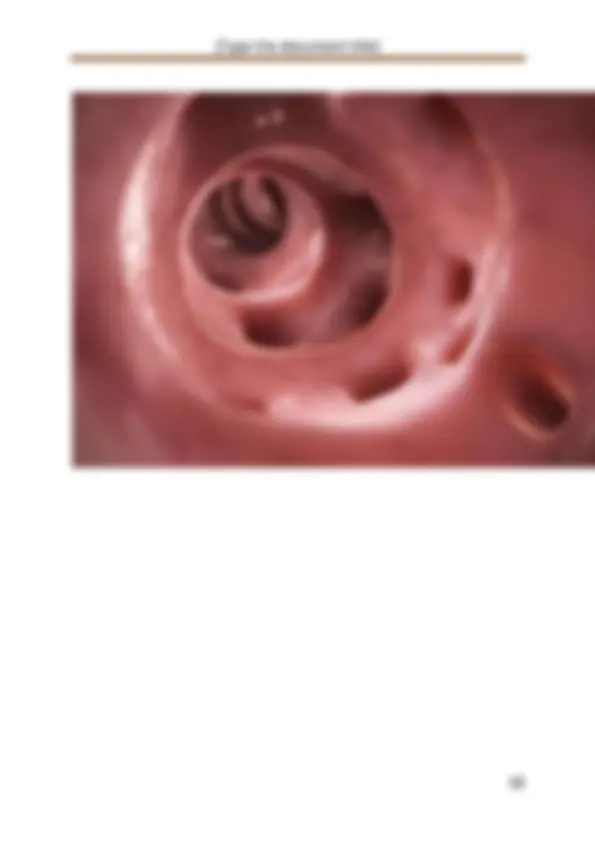


Study with the several resources on Docsity

Earn points by helping other students or get them with a premium plan


Prepare for your exams
Study with the several resources on Docsity

Earn points to download
Earn points by helping other students or get them with a premium plan
Community
Ask the community for help and clear up your study doubts
Discover the best universities in your country according to Docsity users
Free resources
Download our free guides on studying techniques, anxiety management strategies, and thesis advice from Docsity tutors
Information on intestinal diverticula, including their definition, incidence, aetiology, pathology, complications, and clinical picture. It also covers diverticular disease of the colon, including its incidence, aetiology, pathology, and complications. the different types of diverticula, their location, and the complications that may arise, such as intestinal obstruction, acute diverticulitis, and fistula formation. It also discusses the treatment options for these complications, including surgery and embolization.
Typology: Study Guides, Projects, Research
1 / 15

This page cannot be seen from the preview
Don't miss anything!









